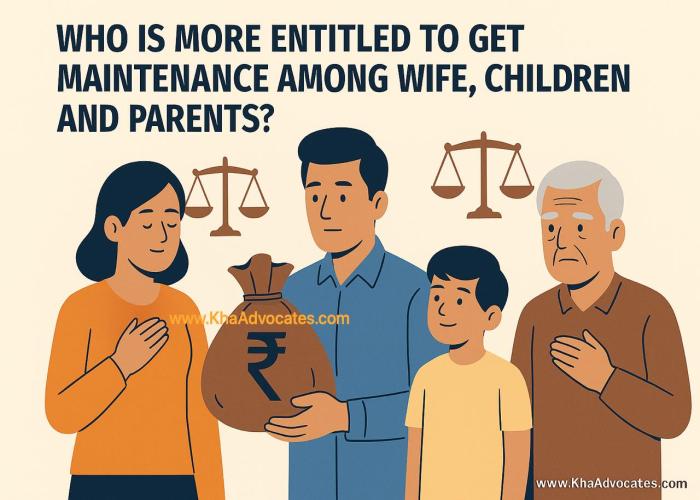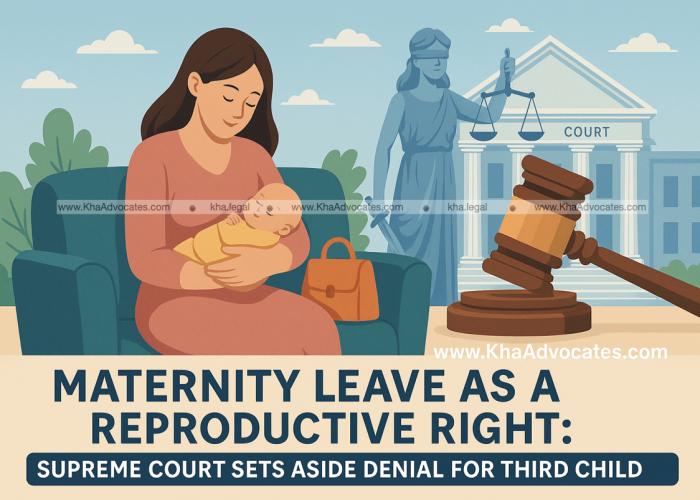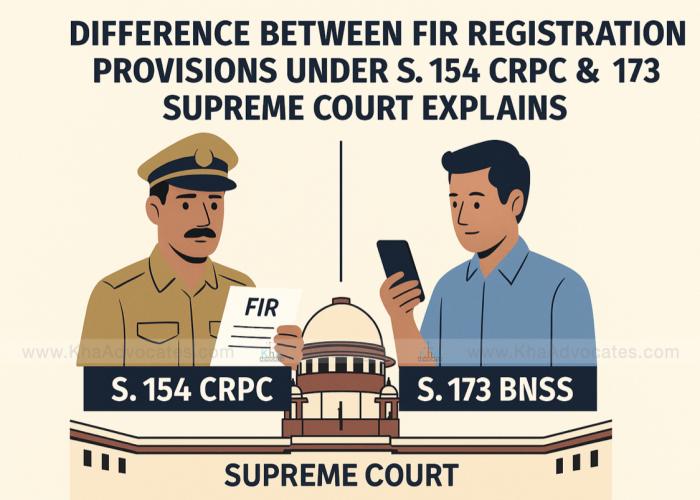

Introduction:Maintenance is a crucial aspect of family law in India, designed to ensure that dependents are not left destitute. The question often arises: who is more entitled to receive maintenance — wife, children, or parents? With increasing family disputes and litigation, understanding the legal priority and eligibility under Section 125 of the Criminal Procedure Code (CrPC) becomes essential.This article explores the law, Supreme Court rulings, and case analyses to explain the legal framework and entitlement hierarchy.Legal Framework: Section 125 of CrPCSection 125 CrPC provides that a person having sufficient means is liable to maintain:His wife (who is unable to maintain herself)His legitimate or illegitimate minor childHis legitimate or illegitimate child (adult) if they are unable to maintain due to physical/mental infirmityHis father or mother if they are unable to maintain themselvesThis provision is gender-neutral regarding children and parents but specifies “wife,” making the husband liable.Hierarchy of Maintenance Claims: Who Comes First?The CrPC does not explicitly lay down a hierarchy in terms of entitlement. However, judicial interpretations and principles of “urgency of need” and dependency are used to determine priorities.Let us now examine how courts have addressed this question.1. Wife’s Right to Maintenance:Legal Basis:Section 125 CrPC + Personal laws (Hindu Marriage Act, 1955 – Section 24 and 25)Supreme Court View:In Chaturbhuj v. Sita Bai (2008) 2 SCC 316, the Court held that even if the wife is capable of earning but does not actually earn, she is entitled to maintenance if she cannot sustain herself.In Rajnesh v. Neha (2020) 12 SCC 285, the Supreme Court emphasized:“Maintenance is not charity. A wife is entitled to live in a similar standard as her husband.”The Court also directed uniform maintenance guidelines to avoid multiplicity of litigation.Key Point:Wife’s right is prioritized based on dependency and subsistence, especially if minor children are also with her.2. Children’s Right to Maintenance:Legal Basis:Section 125 CrPC (minor or disabled child — regardless of gender)Supreme Court View:In Bhuwan Mohan Singh v. Meena & Ors (2015) 6 SCC 353, the Court strongly upheld the child’s right to maintenance, stating:“No father can abdicate responsibility of providing maintenance to his child under the garb of poverty.”In case of custody with the mother, courts award interim maintenance to both mother and child jointly.Key Point:Minor children’s needs take moral and legal priority, especially for education and health expenses.3. Parents’ Right to Maintenance:Legal Basis:Section 125 CrPC + Maintenance and Welfare of Parents and Senior Citizens Act, 2007Supreme Court View:In Kirtikumar Maheshankar Joshi v. Pradipkumar Karunashankar Joshi (1992) 1 SCC 179, the Supreme Court observed:“A son cannot escape liability to maintain aged parents merely because he is married or has a family.”Also, in Manju Tiwari v. Rajendra Tiwari, the Court held:“Children have an obligation to maintain aged parents and failing that, courts can enforce the obligation.”Key Point:Parents must show inability to maintain themselves and that the child has sufficient means.Judicial Interpretation on Priority:Although no statutory ranking exists, courts often evaluate:Urgency of need (e.g., minor child’s education, medical needs)Total dependencyLack of alternate supportIllustrative Case:In Shailja & Anr v. Khobbanna (2017) 9 SCC 62, the Court noted:“The primary objective of Section 125 CrPC is to prevent vagrancy and destitution, and hence maintenance must be awarded with humanitarian consideration.”What If a Nominee or Spouse Deprives Legal Maintenance Beneficiary?Remedy in Law:If a husband hides income or denies maintenance:File an application under Section 125 CrPCSeek interim reliefFile for execution of maintenance orderIf parents or children are neglected, they may approach the Maintenance Tribunal under MWPSC Act, 2007.If a wife is harassed, she may also claim residence and protection under DV Act, 2005.Examples:✅ A divorced wife without remarriage is entitled to maintenance under CrPC, even if maintenance was rejected under personal law – Rohtash Singh v. Ramendri (2000) 3 SCC 180.✅ An unemployed adult daughter with disability can claim maintenance – Rambhau v. Rekha AIR 2016 Bom 200.✅ Father neglected by his son, a government employee, got maintenance enforced via garnishee orders.Conclusion:The right to maintenance is not a privilege — it’s a legal obligation. The courts prioritize necessity, dependency, and fairness over status. While minor children often receive top consideration, wives and dependent parents also enjoy strong legal protection.How KHA Advocates Can HelpAt KHA Advocates, we specialize in family law litigation including:Filing and defending maintenance claimsRepresenting wives, parents, and children under CrPC and personal lawsEnforcement of maintenance ordersExpert counsel in cross-jurisdictional NRI maintenance casesNeed expert legal help to claim or defend maintenance?📞 Contact KHA Advocates today to schedule a consultation.
Read More.jpeg)
Mutual consent divorce is often considered the least acrimonious way for a couple to end their marriage. But even in such consensual separations, financial matters—particularly maintenance and alimony—remain crucial. Whether you’re the spouse seeking support or the one expected to provide it, knowing your legal rights under Indian law is essential.In this comprehensive guide, we will cover:What is mutual divorce under Indian law?Meaning and types of alimony/maintenanceLegal provisions under Section 125 CrPC, Hindu Marriage Act, Special Marriage ActKey Supreme Court judgments and their analysisTaxability and enforceabilityStrategic legal tips for NRIs and women seeking maintenanceWhat Is Mutual Divorce?Mutual divorce in India is governed by Section 13B of the Hindu Marriage Act, 1955 (for Hindus) and Section 28 of the Special Marriage Act, 1954 (for inter-religious couples). The key requirement is that both spouses agree to end the marriage and have been living separately for at least one year.In such cases, financial arrangements such as maintenance or alimony must be mutually settled—preferably through written agreement—before filing the second motion petition in court.What Is Alimony and Maintenance?Although often used interchangeably, alimony and maintenance have distinct legal meanings:Maintenance is regular financial support—monthly or periodic payments—to the spouse who is unable to support themselves.Alimony is typically a one-time lump sum settlement paid at the time of divorce.These financial obligations are not limited to wives. Husbands can also claim maintenance under certain legal circumstances.Relevant Legal Provisions in IndiaSection 125 of the Criminal Procedure Code (CrPC)Provides for monthly maintenance to wives (including divorced wives), children, and parents who are unable to maintain themselves.Section 24 & 25 of the Hindu Marriage Act, 1955Section 24 allows either spouse to claim maintenance during the pendency of proceedings.Section 25 enables permanent alimony after the divorce.Section 36 & 37 of the Special Marriage Act, 1954Equivalent provisions applicable to inter-faith or civil marriages.Muslim Women (Protection of Rights on Divorce) Act, 1986Special provision for divorced Muslim women, including rights to mehr, maintenance, and provision during iddat.⚖️ Supreme Court Judgments on Maintenance & Alimony1. Rajnesh v. Neha (2020) 14 SCC 324Facts: Husband delayed paying maintenance; interim relief was contested.Ruling:The Supreme Court issued comprehensive guidelines on maintenance and alimony, including:Standardized affidavit formats to declare income/assetsTimelines for interim and final maintenanceAvoidance of multiplicity of proceedings across courtsImpact: This case became a landmark for procedural clarity in maintenance matters.2. Bhuwan Mohan Singh v. Meena (2015) 6 SCC 353Observation:“Right to maintenance is a facet of human rights and the constitutional guarantee under Article 21.”Analysis:This judgment emphasized the urgency of providing timely financial relief to the dependent spouse and condemned procedural delays.3. Kalyan Dey Chowdhury v. Rita Dey Chowdhury (2017) 14 SCC 200Ruling:Maintenance should not exceed 25% of the husband’s net salary in most cases, unless special circumstances exist.Significance:This became a benchmark ratio for calculating monthly support, especially in metro cities.Maintenance in Mutual Divorce AgreementsIn mutual divorce, spouses often opt for a one-time full and final settlement, waiving future claims. The settlement must:Be reasonable and not against public policyBe recorded in the divorce petition and decreeNot be vague or conditionalTip: Always include a clause regarding non-revision and enforcement of alimony through execution petitions, if unpaid.Can Maintenance Be Claimed After Mutual Divorce?Yes, if no maintenance was agreed or mentioned in the mutual consent decree, the wife (or husband) can later file a petition under Section 125 CrPC or other applicable laws.However, if the decree clearly states that maintenance has been paid in full, such claims may not stand unless:There was fraud/coercionThe spouse later becomes destituteNRI Marriages and Maintenance: What You Need to KnowNRIs (Non-Resident Indians) seeking or defending mutual divorce should consider:Jurisdiction of Indian family courts for maintenance claimsEnforceability of Indian maintenance orders abroadProvisional seizure of foreign assets in maintenance defaultIndian courts can issue Look-Out Circulars (LOCs) and seize passports for non-compliance.Is Alimony Taxable in India?Monthly maintenance received is taxable in the hands of the recipient under “Income from Other Sources.”Lump-sum alimony is generally not taxable as per judicial interpretation (subject to evolving Finance Acts).The payer cannot claim a tax deduction for maintenance.Important TakeawaysPointExplanation🔍 Who Can Claim?Either spouse under CrPC, HMA, SMA📆 When to File?During or after mutual divorce💡 Court PowersModify, enhance, or reduce amount🛑 Can It Be Waived?Yes, in mutual settlement, if fairly negotiated🚫 Penalty for Non-paymentAttachment of salary/assets, arrestConclusionMaintenance and alimony are not just financial settlements—they are legal rights rooted in dignity and equality. Even in mutual divorces, it’s critical that financial security, especially for the non-earning spouse, is not compromised under emotional pressure.To ensure that your mutual divorce agreement is legally enforceable, tax-efficient, and future-proof, always consult an experienced family law advocate.📞 Need Help with Mutual Divorce or Alimony Claims?KHA ADVOCATES has decades of experience in mutual divorce, NRI matrimonial disputes, and alimony settlement negotiations. We represent clients across the Supreme Court, High Courts, and Family Courts in India.🔗 Visit www.KhaAdvocates.com📩 Book a Confidential Legal Consultation Today!
Read More
Maternity Leave as a Reproductive Right: Supreme Court Overturns Denial for Third ChildIn a landmark decision, the Supreme Court of India has ruled that maternity leave is an integral component of a woman’s reproductive rights. This judgment came as the Court set aside a Madras High Court order that denied maternity leave to a government school teacher for the birth of her third child, citing the state’s two-child policy. Case BackgroundThe petitioner, a government school teacher in Tamil Nadu, had two children from her first marriage, both of whom are in the custody of their father. After remarrying in 2018, she gave birth to her third child—the first child from her second marriage and the first since joining government service. When she applied for maternity leave, the state government rejected her request, citing a policy that restricts maternity benefits to women with fewer than two surviving children. A single judge of the Madras High Court initially ruled in her favor, stating that Section 5 of the Maternity Benefit Act, 1961, does not limit the number of deliveries for which maternity benefits can be claimed. However, this decision was overturned by a Division Bench of the High Court, leading the petitioner to approach the Supreme Court. Supreme Court’s RulingA bench comprising Justice Abhay S. Oka and Justice Ujjal Bhuyan held that maternity benefits are part of reproductive rights and that maternity leave is integral to those benefits. The Court emphasized that reproductive rights are recognized under various international human rights laws, encompassing the rights to health, privacy, equality, non-discrimination, and dignity. The Court observed that the state’s objective of population control through a two-child policy is laudable but should not infringe upon a woman’s fundamental rights. It noted that the petitioner had not availed maternity leave for her first two children, as they were born before she joined government service, and that the third child was her first during her tenure as a government employee. Implications of the JudgmentThis ruling underscores the importance of viewing maternity leave not merely as a statutory benefit tied to employment conditions but as a fundamental right linked to a woman’s reproductive autonomy. It sets a precedent that policies aimed at population control should be harmonized with the rights of women to ensure they do not face discrimination or denial of benefits due to personal circumstances such as remarriage or custody arrangements. ConclusionThe Supreme Court’s decision reinforces the principle that maternity leave is a constitutional guarantee and a vital aspect of reproductive rights. It calls upon state policies to align with this understanding, ensuring that women’s rights are upheld irrespective of the number of children they have or their marital history. References:LiveLaw: Maternity Leave Part Of Reproductive Rights: Supreme Court Sets Aside Denial Of Maternity Leave For Third ChildTimes of India: Maternity leave constitutional guarantee, says SC, junks HC order denying it for 3rd childbirthIndia Today: Maternity leave integral to rights: Court on benefits extended to working women
Read More
IntroductionWith the introduction of the Bharatiya Nagarik Suraksha Sanhita, 2023 (BNSS), the traditional provisions under the Criminal Procedure Code, 1973 (CrPC) have undergone significant restructuring. One of the most fundamental and commonly invoked sections in criminal jurisprudence—Section 154 CrPC, dealing with FIR registration—now finds a parallel in the new Section 173 of the BNSS. This article examines the core differences between these two provisions and highlights key clarifications made by the Supreme Court regarding FIR registration, citizens’ rights, and police obligations under the new legal framework.Understanding Section 154 CrPC: FIR in the Existing SystemSection 154 of the CrPC defines the process of registering a First Information Report (FIR) when information regarding a cognizable offence is brought to the notice of the police. It lays down three core principles:Mandatory Registration: In cases involving cognizable offences, police must register an FIR without conducting a preliminary inquiry.Written & Signed by Informant: The information must be recorded in writing, read over to the informant, and signed by them.Copy to Informant: A copy of the FIR is to be provided free of cost.This section has been interpreted in various landmark judgments (e.g., Lalita Kumari v. Govt. of U.P.), reinforcing the obligation of the police to register FIRs promptly without unwarranted delay or discretion.Section 173 BNSS: The New Framework for FIRSection 173 of the BNSS, 2023, redefines and reorders several procedural elements of FIR registration. While the intent and structure remain broadly aligned with Section 154 CrPC, there are a few crucial differences:Use of Technology: BNSS explicitly promotes the use of electronic means for filing information. Citizens can now submit details of cognizable offences through digital platforms, increasing accessibility.Timelines & Accountability: BNSS introduces stricter time-bound processes for police action post-FIR registration, reinforcing accountability and transparency in investigations.Digital Documentation: BNSS focuses on the digitization of records, ensuring that FIRs, signatures, and subsequent actions are documented through an online tracking mechanism for transparency and traceability.Public Safety Focus: The BNSS provisions reflect a shift toward citizen-centric policing, emphasizing service delivery, protection of victim rights, and systemic efficiency.Supreme Court’s View: Harmonizing Old & NewIn recent commentary, the Supreme Court addressed the parallel existence and transition from Section 154 CrPC to Section 173 BNSS. The Court emphasized that the underlying objective remains the same: prompt and fair registration of FIRs in cognizable cases. However, the Court also observed:Ease of Access: The digital features under BNSS remove bureaucratic hurdles, especially for citizens in remote or rural areas.Checks on Police Discretion: The Supreme Court reiterated that police authorities must not delay FIR registration under the pretext of conducting preliminary inquiries unless mandated by law.Victim-Centric Justice: The judiciary stressed the BNSS’s inclination toward protecting victim rights by ensuring procedural speed, technological inclusion, and time-bound investigation.Key Differences: CrPC vs. BNSSAspectSection 154 CrPCSection 173 BNSSFIR Filing ModeWritten/Oral at police stationIncludes digital submissionMandatory FIR for CognizableYesYesTechnology IntegrationLimitedStrong emphasis on digitizationTimelines for Police ActionBroad and case-law dependentDefined statutory timelinesVictim Support ProvisionsMinimal procedural supportEnhanced victim-centric proceduresPublic Awareness/AccessPhysical, often opaqueDigital, transparent tracking systemConclusionThe transition from Section 154 CrPC to Section 173 BNSS marks a pivotal shift in criminal justice reform in India. While the foundational principles of FIR registration remain intact, BNSS introduces much-needed modernization, accountability, and technological accessibility. The Supreme Court’s interpretation reinforces the constitutional guarantee of prompt and fair investigation and affirms the legislature’s intent to bring procedural law in step with 21st-century policing standards.As India gradually implements BNSS, legal practitioners, police authorities, and citizens alike must familiarize themselves with the evolving framework to ensure the effective protection of rights and delivery of justice.
Read More
Repaying a loan is a significant financial milestone. However, the journey doesn’t end with the final payment. Ensuring you collect all pertinent documents post-repayment is crucial to safeguard your financial interests and legal rights. This guide outlines the essential documents you should collect after loan repayment, incorporating the Reserve Bank of India’s (RBI) guidelines and relevant legal considerations.📄 1. No Objection Certificate (NOC)The NOC is a formal declaration from the lender stating that you’ve repaid the loan in full and that there are no outstanding dues. This document is vital as it serves as proof of loan closure and is often required for future financial transactions or legal purposes.🏠 2. Original Property DocumentsIf you’ve taken a secured loan, such as a home loan, the bank would have retained original property documents as collateral. Post-repayment, it’s imperative to retrieve:• Title deeds• Sale agreements• Property tax receipts• Encumbrance certificates These documents are essential for establishing ownership and for any future property transactions.🔓 3. Lien Release LetterA lien is a legal claim or right against a property. Upon loan repayment, the bank should provide a lien release letter, confirming that the lien on your property has been removed. This is crucial for updating property records and ensuring clear ownership. 📑 4. Loan Account StatementRequest a comprehensive loan account statement detailing all transactions, including:• EMI payments• Interest charges• Penalties (if any)• Final settlement details This statement serves as a financial record and can be useful for tax purposes or future financial planning.🧾 5. Post-Dated Cheques (PDCs) and ECS DeactivationIf you’ve provided PDCs or set up Electronic Clearing Service (ECS) mandates for EMI payments, ensure:• Retrieval of any unused PDCs• Deactivation of ECS mandatesThis prevents any unintended debits from your account post-loan closure. 🚗 6. Form 35 (For Vehicle Loans)For vehicle loans, the bank registers a hypothecation on your vehicle’s Registration Certificate (RC). Post-repayment, collect Form 35 and the NOC from the bank to remove the hypothecation from the RC at the Regional Transport Office (RTO).📊 7. Updated Credit ReportAfter loan closure, obtain your credit report from credit bureaus like CIBIL, Experian, or Equifax to ensure:• The loan is marked as ‘Closed’• There are no outstanding duesA clean credit report is essential for maintaining a good credit score and for future loan approvals.🏛️ RBI Guidelines on Document ReturnThe RBI has mandated that banks and Non-Banking Financial Companies (NBFCs) must return all original movable or immovable property documents within 30 days of full loan repayment. Key Points:• Timeline: 30 days from the date of loan closure.• Penalty for Delay: Banks are liable to pay ₹5,000 per day for delays beyond the stipulated period.• Loss or Damage: In case of loss or damage to original documents, banks must assist borrowers in obtaining certified duplicates within 30 days. ⚖️ Legal ConsiderationsIt’s essential to be aware of your legal rights concerning loan closure:• Equity of Redemption: As established in the case of Vernon v Bethell, borrowers have the right to reclaim their property upon full repayment of the loan.• Right to Information: Under the Right to Information Act, borrowers can request information regarding their loan accounts and related documents. ✅ ConclusionCollecting all relevant documents after loan repayment is not just a procedural formality but a crucial step in ensuring your financial and legal security. Adhering to RBI guidelines and understanding your rights can help you navigate this process smoothly.Always maintain both physical and digital copies of these documents for future reference.For more insights on financial management and legal rights, stay tuned to our blog.
Read More
KhA Advocates is a premier law firm in Kolkata, West Bengal known Internationally, providing expert legal services in property registration, corporate law, matrimonial law, taxation, dispute resolution, and more. We offer tailored legal solutions for NRIs, businesses, and residents, ensuring 100% compliance and protection. With our efficient, transparent, and reliable approach, we safeguard your legal interests.
Copyright @2024 KHA Advocates
Designed by Webina Tech
Please read and accept our Terms & Conditions and Privacy Policy to continue using our site.

